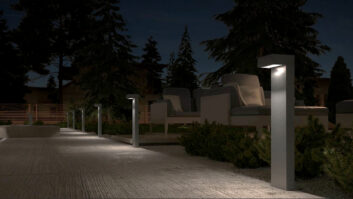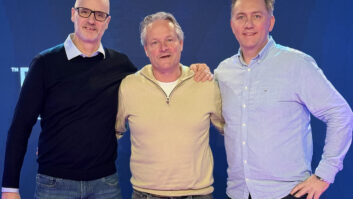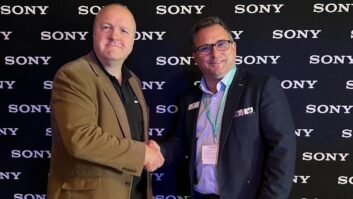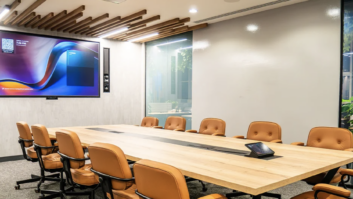On the eve of the CEDIA Business and Technology Forum in October, AWE Europe and IE Residential convened another ‘AWEsome Forum’, this time to discuss trends in residential lighting control systems. Around the table were: Paddy Baker (chair) – editor, IE Residential Will Brocklebank – director and head of technology, Face to Face Digital Simon Buddle – technical director, SMC Philippe Regnier – business development manager, Philips Dynalite Iain Shaw – partner, Brilliant Paul Mott, sales director, AWE Europe Mal Fisher, training manager, AWE Europe You can read part one of the discussion here. Turning to LEDs in particular, the participants agreed that control can be difficult. “LED looks like a revolutionary product in what it can do and how it works, but it has been difficult to control,” said Paul Mott of AWE. “We won’t use any combination of control system, driver and fitting that we haven’t extensively tested in house,” said Iain Shaw of Brilliant. “If we pick up designs from certain lighting design companies, we’ll have a damn good look at the specification because if the luminaires don’t fit with what we’re trying to do, then we won’t proceed with that spec.” Simon Buddle of SMC added:“We’ve ended up on projects where someone else has specified the light fittings as being dimmable, and we’ve gone along and they’re just not. We have to say to the client, I’m really sorry, but this is just an on-off switch.” Philippe Regnier of Dynalite gave a manufacturer’s perspective: “LED is a fantastic opportunity for everybody; it offers so much flexibility in how to use light in your indoor or outdoor environment. It pushed the whole lighting industry.” On the other hand, he felt that the situation with LEDs is “a massive mess” because there is a low entry level for manufacturers, and a lack of product standards. “If someone brings new luminaires into your project, it’s not straightforward – there’s no certainty.” Shaw added that the availability of cheap, lower-quality LED fixtures had made some customers unwilling to pay higher prices for top-quality products. @page_break@ Regnier continued: “Hopefully in the coming years, standards will come, especially for drivers and dimmers, and things will get a little clearer for the industry. What needs to happen with LEDs has happened earlier with other technologies. But at the moment it’s difficult. That’s where, as a lighting manufacturer, we at Philips hope we can make a difference by making products that actually work with every kind of lighting that you would like to install.” For example, the company plans to launch a mains dimmer for LED products that will give “a fair amount of compatibility with the solutions out there in the market”. Shaw believed that clients would “take quite a hard look” at claims made by their installer for the performance of a lighting control system, but Buddle and Brocklebank felt that was not necessarily the case. Brocklebank said: “There’s only so much attention a client can give at the start of a project. Sometimes the lighting designer is right there in their face, selling them a serious dream. If the client is poetically minded, the lighting designer can go in there and make almost anything happen.” He went on to stress the importance of close liaison with the lighting controls company throughout the design and specification stage, to ensure the designer’s and client’s intentions become reality. Asked about the direction that LED dimming technology is like to take, Regnier replied: “LEDs are about flexibility. I don’t think there’s going to be one way of doing things. What holds for CI may not hold for outdoor lighting, for instance. I believe there will be a lot of different ways to control LED – and for each one there will be better options in the future.” He added that, while there had been talk in recent months of IP-addressable bulbs, he did not believe that this was a feasible solution for the CI market. Shaw agreed: “People don’t reconfigure their houses that often. I don’t want an individually addressable fixture. Could I deal with one? Yes. Is it going to give me anything? No.” Regnier confirmed that Philips’ approach is to find solutions for existing applications, rather than “flooding the world with fantastic new protocols”. Brocklebank said that custom installers often look to avoid manufacturers offering new, unproven technology; they want technical support staff to have experience of products so that they can offer good advice when problems arise on site. @page_break@ The discussion moved on to training, and whether installers were getting the training in lighting control that they needed. Buddle, who sits on CEDIA’s education committee, thought that “as an industry that we are still very immature” when it comes to training. While manufacturers such as Control 4 are rigorous when it comes to offering thorough, properly certificated training, “with a lot of manufacturers you’ve just got to turn up in order to get your account, because it’s part of the contract terms for the account.” Against this background, lighting control technology had become hugely more complicated over the past 15 years or so, he said. “Manufacturers have to take a step back, and not think of training as merely a tick box on a contract but use it to add value to people coming through, and growing them fully trained engineers.” He continued: “Training is fundamental to our industry because training needs move so quickly, but it’s still not mature.” This point was picked up by Brocklebank: “Isn’t that exactly the Achilles heel? Because training needs move so quickly, no-one can invest in training other than the coalface CI execution company – the people who pick up the pieces on site.” AWE’s Paul Mott asked whether suppliers should offer a different type of training: “Are we looking at something that should be trained with a certification to a particular level, and maybe going into more advanced areas and more on-site support?” Shaw said: “I think you need a multi-layered approach. What do I want from a supplier? I’d like fantastic introductory training – you know when you take on a product range you need an introduction what it does, so that you’re confident with the product and when you phone up tech support you don’t feel like a complete dimwit.” Is there a role for non-manufacturer-specific training? Buddle felt that, while manufacturers were best placed to explain the intricacies of their own products, custom installers could take the initiative and learn more about the fundamentals of lighting control. “Forget about whose lighting control system it is – understand lighting control, understand the different ballasts, the different methods of dimming. After you’ve got that under your belt after 18 months, go and look at the slightly weird stuff – the technology that’s lighting up the cedar tree outside that’s 1,000 watts and takes five seconds to strike. There’s absolutely an opportunity for that more advanced level.” Brocklebank noted that major universities such as Stanford and Harvard, are making their course notes freely available on iTunes U. Taking a cue from this, he felt that the industry could do more to provide online learning and testing. “The best engineers are the ones who are actually interested on a personal level, they’re not just doing it for work. They’re the ones who would watch this, do the test and say, ‘Great, that just saved me about three weeks.’” @page_break@ The panel were then asked what will drive the growth of the lighting control market in the future? Buddle said: “There’s always a need for lighting control, certainly in the houses that we do. For us, lighting control now includes shades as well, that’s become a hugely important part of the business, and I can only see it growing more and more. Interfacing with other systems around the house is a key selling feature for our systems. Long may it continue – long may we live in a country where it gets dark at night!” Brocklebank said: “If we get ratification of lighting control – rather than the overall consumption of luminaires – in legislation, that will be a massive thing, because architects will have to sit up and say, ‘This is an entire section that I have to formally put in my budgeting – I have to get specialists involved in this.’ Once you’ve opened a dialogue there, there’s so much more that you can talk about.” Shaw added that increased involvement of M&E engineers would also drive the market. Mal Fisher of AWE wondered if the economic slowdown was going to push traditional CI installers towards lighting control. “We’re seeing a very slow migration, but when we speak to our customers about lighting control, there’s still quite a large contingent saying they don’t want to touch it. Are they going to be pushed it that direction?” In response, Buddle mapped out a typical path that CI businesses take as they grow. Once they have started on home cinema work, he said, “they end up putting a dimmer pack in the wall, because it’s just part of what that home cinema is. And lighting control becomes the next step out of that room, back into the whole house.” Many installers start to feel uneasy where the more aesthetic issues are involved, he added. “But when it’s control, and people have got over their fear of another technology, I think it’s a tremendously positive step forward for people.” Brocklebank observed that lighting control is one of many areas of technology that is being democratised at the lower end: “There are always going to be hobbyists, people who are a bit savvy and like to play around with technology. One day, there will be a lighting control product that will be sufficiently plug-and-play for a technically minded homeowner to install.” www.awe-europe.com
www.brilliantliving.co.ukwww.facetofacedigital.comwww.philips.com/dynalitewww.smc-uk.com
AWEsome Forum – lighting control (part 2)
Among the topics covered in the second part of our roundtable discussion on lighting control are: the problems around controlling LED, and what's being done to resolve them; drivers of future growth in the marketplace; and one area in which this 'grown-up' part of the CI portfolio (as it was described in part one) is still somewhat immature. Paddy Baker reports.







